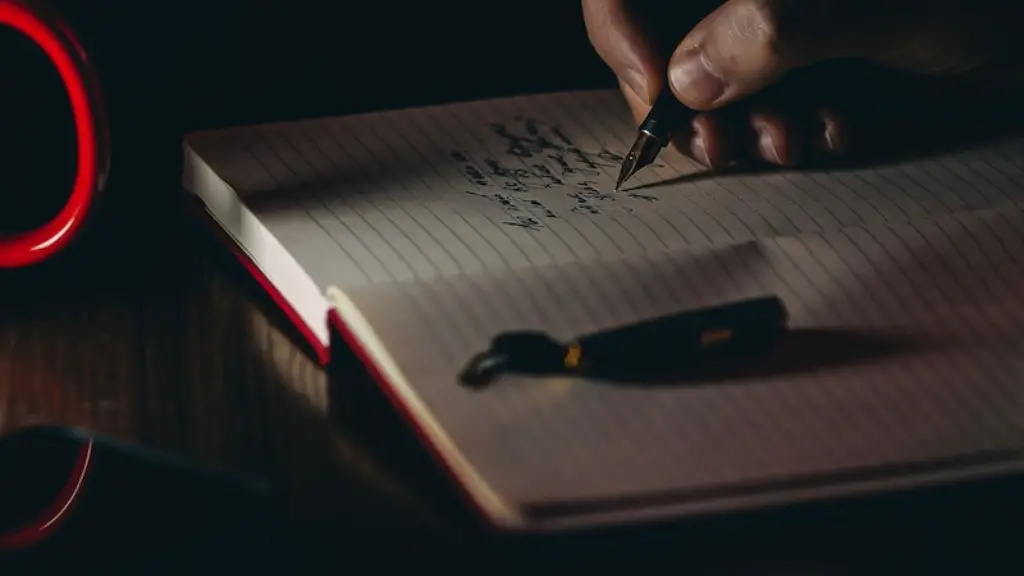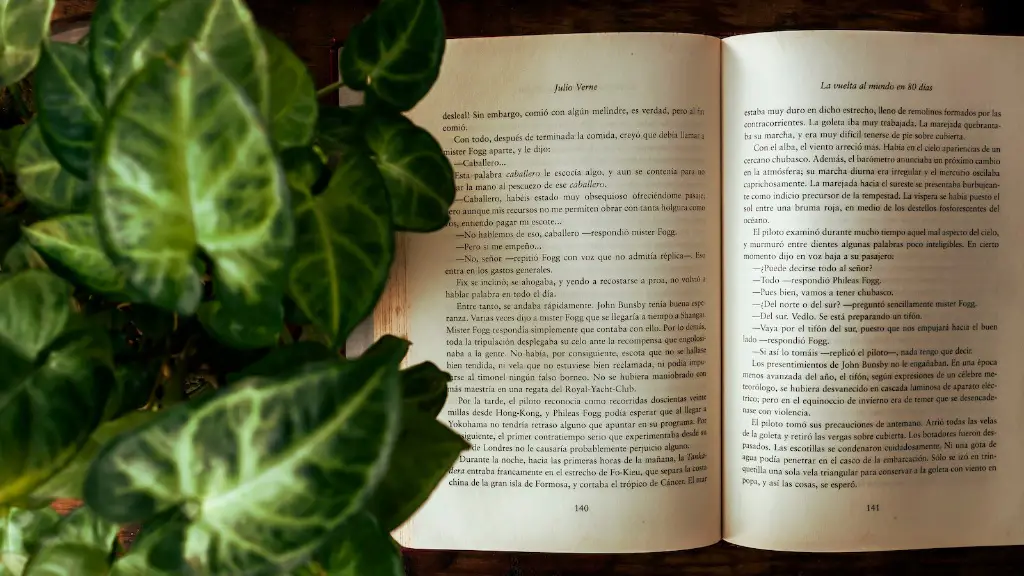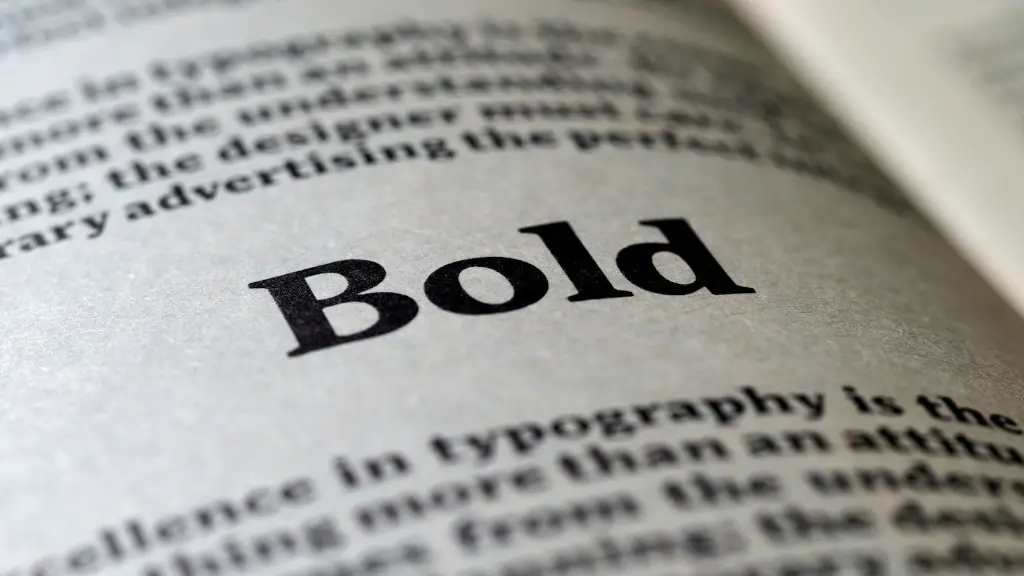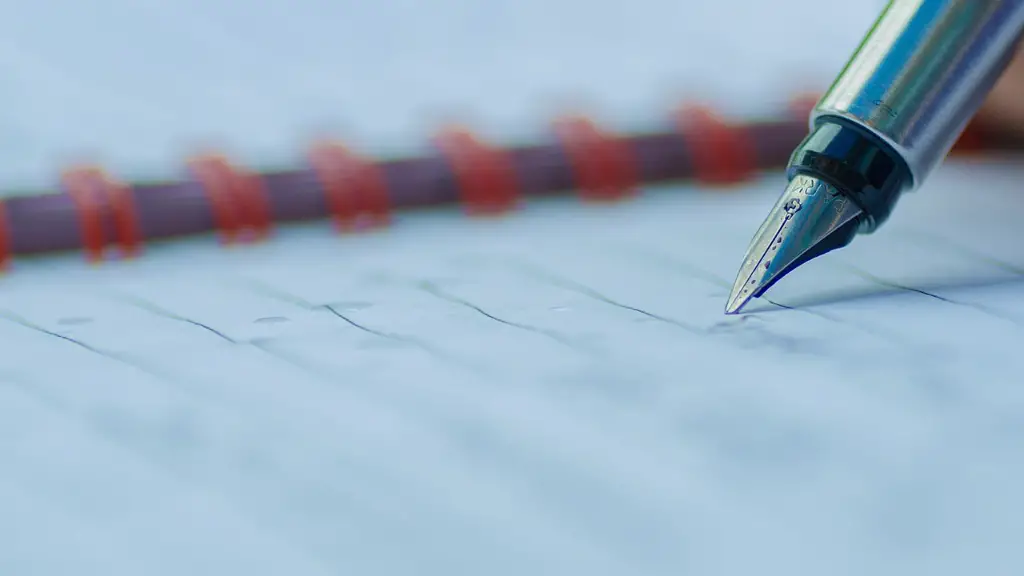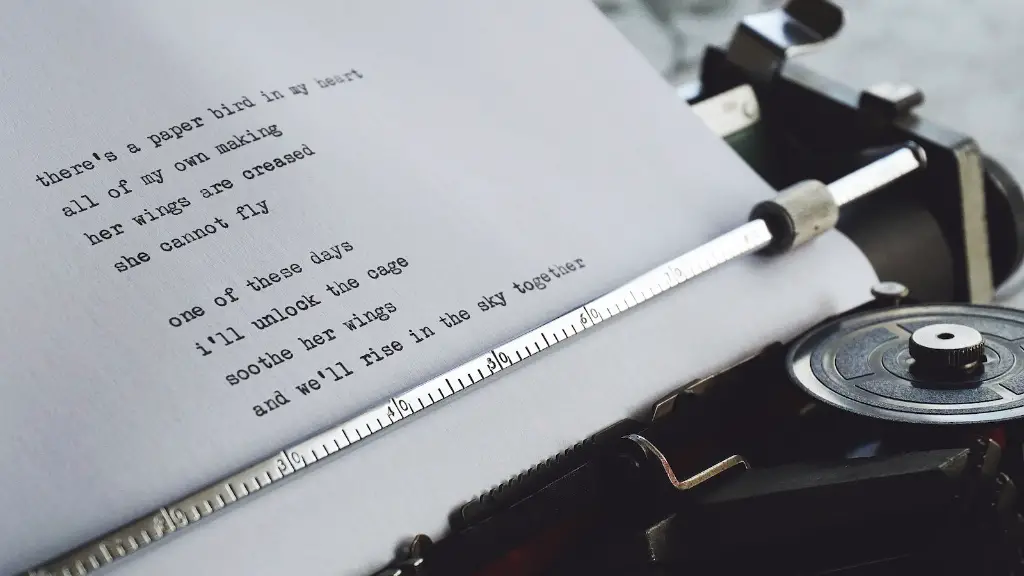Onomatopoeia is a literary device where words are used to suggest the sounds they describe. In poetry, the use of onomatopoeia alludes to the sounds of the natural world and adds a physical, sensory dimension to the poem. It is often used to create a vivid and convincing narrative experience for the reader.
From the Greek “onomatopoiia”, meaning “name (or sound) maker/creator,” onomatopoeia is the imitation of a sound through spoken language, often used to describe the sound of an animal or object. In poetry, it gives language to the sound and emotional feelings created in a poem. It can range from the sound of a cricket chirping to the roar of a lion. It also includes common everyday sounds like the buzzing of a bee, sizzling of bacon, and the laughter of a child.
Onomatopoeia is commonly used to add texture and depth to the poem, while also creating a vivid imagery of the moment being described. It helps the reader to become more immersed in the written piece. For example, the sound of rain falling while a person is in solitude: “The rain pitter patters on the roof.” Here the sound of rain is being conveyed without specifically stating what the sound is. Instead, the poet has chosen the words to “pitter-patter”, as this better conveys the sound which is being described.
The use of onomatopoeia can also be a great tool for conveying strong emotions like sadness or anger. Writers use onomatopoeic words to mimic the sound of real life events. For example, the sound of a screaming child, “the wail of a baby” is an effective way to describe a child’s pain without actually having to state it in so many words. Similarly, the sound of a loud argument, “the roar of angry voices” can be used to evoke a sense of anger and tension in a poem.
Onomatopoeia is also highly effective when it comes to creating humorous works of literature. Through the use of vivid sounds, authors can easily evoke humor and a lighthearted tone. For example, the sound of a cat meowing, “meow meow meow” can be a funny way to describe a cat’s behavior. It is also an easy way for writers to lighten up a situation and make a point in a humorous way.
Sounds of the Natural World in Poetry
In poetry, the use of onomatopoeia has the power to transform a common poetic subject into an extraordinary one. By using the sounds of the natural world, the reader can feel as if they are part of the poem, hearing and “feeling” the sounds before, during and after the poem. This form of poetic expression can be especially powerful when describing moments of great beauty or intensity. For example, a lonely beach scene “the crash of waves, the seagulls cry”.You can almost feel the waves coming ashore, and the seagulls soaring above.
Onomatopoeia is also a powerful tool for conveying the beauty of language itself. As the reader reads the poem, the sound of language brings the emotions of the poet to life. The use of this poetic device can also create a sense of nostalgia, a longing for the past, or a longing for a time never experienced. In this way, the sounds of language become a powerful conduit for connecting the reader to the poem.
By creating a sensory experience for the reader, onomatopoeia can be used to engage the reader’s emotions and imagination. Readers become invested in the poem, feeling more connected to the writer’s words and ideas. This connection can be the key to unlocking the passion, the beauty, and the power of the written word.
Conclusion on Onomatopoeia in Poetry
Onomatopoeia is a powerful tool for poets to convey their thoughts, feelings and emotions. It engages the reader’s senses and emotions and creates a vivid image of the scene being described. Through the use of sounds of the natural world, the poem can become more alive and dynamic. Additionally, by connecting the reader to the poem and conveying the beauty of language, onomatopoeia can be an effective way to create memorable poetry.
Onomatopoeia and Imagination
The use of onomatopoeia can also be an effective way to invoke the reader’s imagination. By creating an atmosphere that encourages the reader to fill in the blanks, more of the poem’s story can emerge. This allows readers to engage more with the poem, and for the writer, to convey more of the poem’s narrative.
When used as a poetic surprise, onomatopoeia can also be a way for writers to take their readers on an unexpected journey. By introducing unexpected sounds and rhythms, writers can create a sense of surprise and anticipation for the reader. Additionally, it can be used to add a layer of suspense and mystery to a poem. For example, the poet can use the sound of a thunderstorm to convey a sense of impending danger or the sound of silence to convey a feeling of loneliness.
By using onomatopoeia in a poem, writers can build original, powerful and unexpected experiences for their readers. Onomatopoeia can be a great tool for poets to enhance the reader’s imagination, by creating mental images and convey atmosphere.
Onomatopoeia and Musicality
Onomatopoeia also has the capacity to create a musicality that is unparalleled in other forms of written expression. When used in combination with other literary devices such as alliteration and rhyme, onomatopoeia can create a feeling of rhythm and flow to a poem. This can help the reader to become even more engaged in the poem, as it allows for a more immersive poetry reading experience.
But not all forms of onomatopoeia are created equal. It is important for poets to find a balance between the sounds they use and the rhythm and flow they want to create. For example, the sound of a hammer hitting against a wall could be simulated using the words “wham, kaboom, or bang”. It is up to the poet to find the perfect sound to fit the current context and to create the desired effect.
The use of onomatopoeia in poetry can be a powerful way to bring a poem to life and create a powerful musicality. By adding interesting and unexpected sounds to the poem, writers can truly enhance the reading experience for the readers.
Onomatopoeia and Vocalization
Onomatopoeia also adds an element of vocalization to poems. Through the use of onomatopoeia, poets can create a more interactive poem. Readers are then able to supply their own voice to the reading of the poem, adding to the overall experience. This can also be a great tool for teaching and engaging with younger readers. Through the use of onomatopoeia, writers can create memorable poems that can reach out to readers and really make a connection.
Onomatopoeia is a powerful tool that can be used to craft effective, emotionally charged and emotionally resonant poems. By using the sounds of the natural world and creating vivid imagery, onomatopoeia can add another layer of meaning to a poem. Additionally, it can add a layer of musicality that can bring a poem to life. Writers can also use onomatopoeia to create a more interactive and engaging poem, by providing the reader with their own voice.
